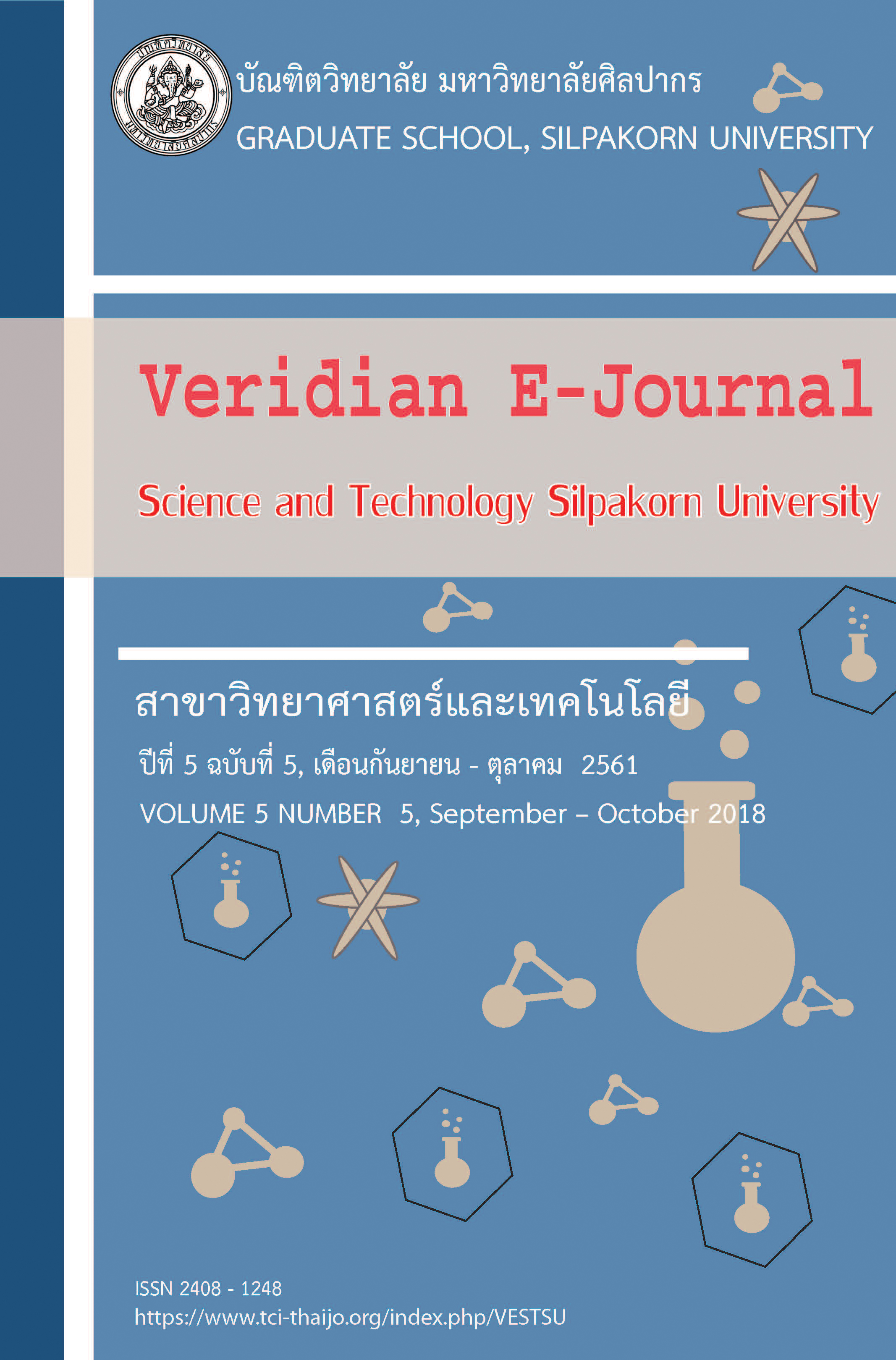การวิเคราะห์เมทแอมเฟตามีนในตัวอย่างปัสสาวะ ด้วยเทคนิคแก๊สโครมาโทรกราฟีที่มี เฟลมไอออไนเซชันเป็นตัวตรวจวัด โดยใช้วิธีการเตรียมอนุพันธุ์ร่วมกับโซลิคเฟสเอ็กซ์แทรกชัน และวิธีเฮดสเปช (Determination of methamphetamine in urine samples by gas chromatography–flame ionization detector (GC-FID) techniques using the derivatization coupled with solid phase extraction and the headspace method)
Main Article Content
Abstract
งานวิจัยนี้ศึกษาการเปรียบเทียบปริมาณเมทแอมเฟตามีนที่ได้จากวิธีการเตรียมตัวอย่างสองวิธี ได้แก่ การเตรียมอนุพันธุ์ (derivatization) ด้วย trifluoroacetic acid (TFA) ร่วมกับโซลิดเฟสเอ็กซ์แทรกชัน (SPE) และวิธีเฮดสเปส (HS) ในการวิเคราะห์เมทแอมเฟตามีน (MA) ในตัวอย่างปัสสาวะของผู้เสพสารเสพติด และใช้ diphenylamine (DPA) เป็น internal standard (IS) แล้ววิเคราะห์ด้วยเทคนิค แก๊สโครมาโทกราฟี ที่มีเฟลมไอออไนเซชันเป็นตัวตรวจวัด (GC-FID) ในการวิเคราะห์ MA วิธีการเตรียมตัวอย่างทั้งสองวิธีให้ความเป็นเส้นตรงที่ดี (r2 เท่ากับ 0.9952 และ 0.9972) ในช่วงความเข้มข้น 1000-10000 ng/mL วิธีการเตรียมอนุพันธุ์มีค่าความเข้มข้นต่ำสุดที่สามารถวิเคราะห์ได้ (LOD) และค่าความเข้มข้นต่ำสุดที่สามารถวิเคราะห์ปริมาณได้ (LOQ) เท่ากับ 116 และ 161 ng/mL ตามลำดับ ในขณะที่การวิเคราะห์ MA ด้วยวิธีเฮดสเปส (HS) ให้ผลค่า LOD เท่ากับ 45 ng/mL และค่า LOQ เท่ากับ 58 ng/mL ซึ่งเพียงพอสำหรับการวิเคราะห์หาปริมาณตัวอย่างปัสสาวะของผู้เสพสารเสพติด เมื่อนำสองวิธีข้างต้นไปใช้ในการวิเคราะห์หา MA ในตัวอย่างปัสสาวะจำนวน 10 ตัวอย่าง ที่ได้จากสถาบันนิติเวช โรงพยาบาลตำรวจ สำนักงานตำรวจแห่งชาติ พบว่าปริมาณ MA ในตัวอย่างที่วิเคราะห์ด้วยเทคนิค GC-FID ที่ใช้วิธีการเตรียมตัวอย่าง 2 วิธีข้างต้นไม่ต่างกันอย่างมีนัยสำคัญทางสถิติ ดังการทดสอบทางสถิติด้วย paired t-test [ tstat (1.39) < tcritical (2.26) ที่ระดับนัยสำคัญ 0.05] งานวิจัยนี้ได้แสดงให้เห็นว่าวิธีการเตรียมอนุพันธุ์ร่วมกับโซลิดเฟสเอ็กซ์แทรกชันและวิธีเฮดสเปสเป็นวิธีที่ให้ผลเป็นที่น่าพอใจเมื่อใช้กับการวิเคราะห์หาปริมาณ MA ในตัวอย่างปัสสาวะด้วยเทคนิค GC-FID
Two methods of sample pretreatment namely, the derivatization by trifluoroacetic acid (TFA) coupled with Solid Phase Extraction (SPE) and the Headspace (HS) method have been compared for the analysis of methamphetamine (MA) in urine samples by Gas chromatography-flame ionization detector (GC-FID) technique. Diphenylamine was used as internal standard (IS). The two methods showed good linearity (r2 = 0.9952 and 0.9972) in the range 1000-10000 ng/mL for MA. The limit of detection (LOD) and limit of quantitation (LOQ) in the derivatization method were 116 and 161 ng/mL respectively while the MA analysis in the HS method resulted in the LOD of 45 ng/mL and the LOQ 58 ng/mL. The methods were applied to determine MA in ten urine samples provided by the Institute of Forensic Medicine, Police General Hospital, Royal Thai Police. The MA contents in the samples determined by the GC-FID technique using the two pretreatment methods were not significantly different as suggested by the statistical testing of paired t-test [ tstat (1.39) < tcritical (2.26) at a significance level of 0.05]. This study demonstrated that the derivatization coupled with solid phase extraction and the headspace method provided satisfactory results when the methods were used in GC-FID analysis of MA in urine samples.

